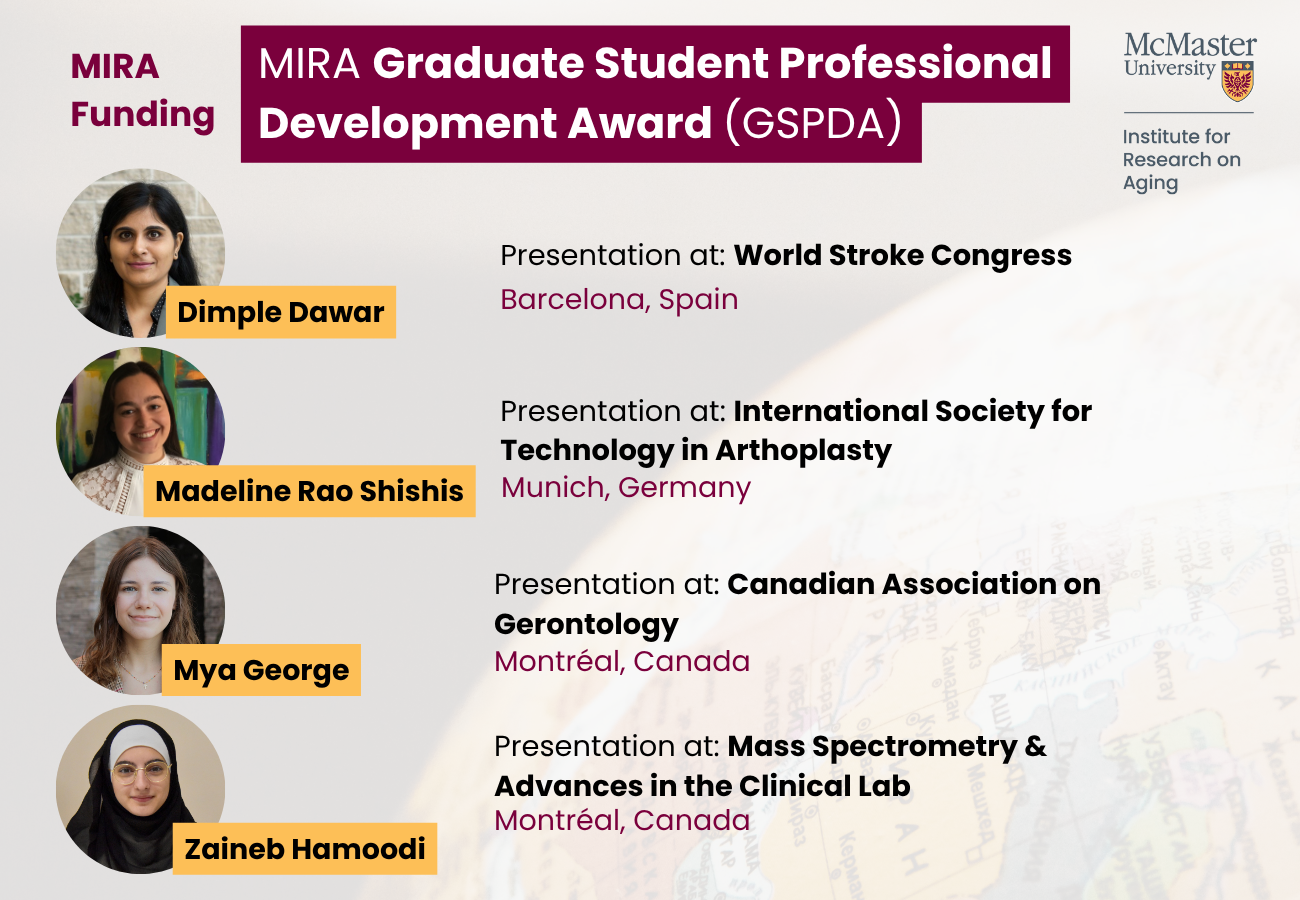
Published: May 2, 2018
“You can have the world’s best fire alarm, but you need fire trucks, too.”
In one sentence, David Hogan laid out both the role and the limits of technology in supporting society.
Hogan’s point about using technology as a tool to improve human connection — not to replace it — was at the heart of a recent McMaster Institute for Research on Aging event and panel discussion featuring Hogan and other members of MIRA’s International Scientific Advisory Committee.
The committee, which reviews MIRA’s progress and provides input into its research and research strategy, comprises leading global experts on aging from diverse disciplines. In the panel discussion, moderated by MIRA scientific director Parminder Raina, each emphasized how vital it is to maintain a strong human connection while developing technology to support older adults in smart cities.
A Smart City is one that uses technology to better connect its residents to each other, as well as to services — creating a healthier, safer environment in which to grow up or grow old. The City of Hamilton is working toward a Smart City designation, and supporting its aging population is a pivotal part of that work.
A Smart City would streamline a lot of processes residents find themselves struggling through, and solve problems before they get critical, said Hogan, who chairs the advisory committee. “But a lot of the things that make life really worthwhile are things like connections with family and friends and neighbours,” and a Smart City needs to foster those connections.

Strong connections are an important driver of the things we need to be happy, agreed James Nazroo, from the University of Manchester. And when we age, changes in our relationships threaten these connections.
“We retire and move into different social and work environments,” Nazroo said, checking off a rapid list on his fingers. “We become a little bit less mobile, a little bit less able to connect with the things we like to do. Our children grow up and move away, sometimes taking our grandchildren with them. And our partners, spouses and friends die.
“All those things disconnect us in various ways.”
Nicola Palmarini, IBM’s global manager of aging and accessibility solutions, evoked the piazzas, or public squares, that were community hubs when he was growing up in Italy. Whether it’s done in person or over the internet, an aging-friendly city should foster that same sense of community, he said, creating a physical or virtual space where people can congregate.
It’s vital, when creating these spaces or developing solutions, to listen to the actual people who are affected by aging, said Tom Kirkwood, from Newcastle University. And supporting older adults’ aspirations is every bit as important as addressing their practical, everyday needs, he emphasized.
“The need but also the desire among older people is to be included,” Kirkwood said, noting that older adults increasingly experience marginalization and exclusion. “We need to include older people in finding solutions to the things that matter to them.”
And that’s where McMaster and MIRA come into it: Embracing and celebrating the rich diversity of an aging population is at the core of MIRA’s work, Kirkwood noted.
“Cities and politicians can’t do this alone,” agreed Chancellor Suzanne Labarge, who funded the creation of the Labarge Centre for Mobility in Aging.

“Somewhere along the line, the private sector and people at MIRA and people from the community are going to have to figure out how we will work together to do it.
“Change requires persistence, it requires vision and it requires unique individuals, and I think we’ve got all of those to offer,” Labarge said.
Kirkwood echoed that sentiment in the panel discussion. “A truly Smart City needs to be more than just smart,” he said. “You need heart.”
The McMaster Institute for Research on Aging (MIRA) aims to optimize the longevity of Canada’s aging population through research, education, and collaboration. Interdisciplinary teams work alongside older adults and key stakeholders to find ways that will help Canadians spend more years living well. MIRA also acts as an entry point to some of McMaster’s existing research platforms in aging, including the Labarge Centre for Mobility in Aging and the McMaster Optimal Aging Portal. For more information, go to http://mira.mcmaster.ca/

